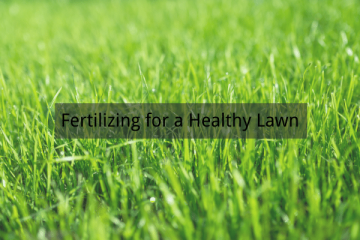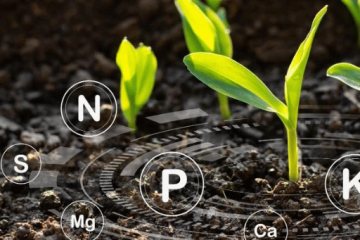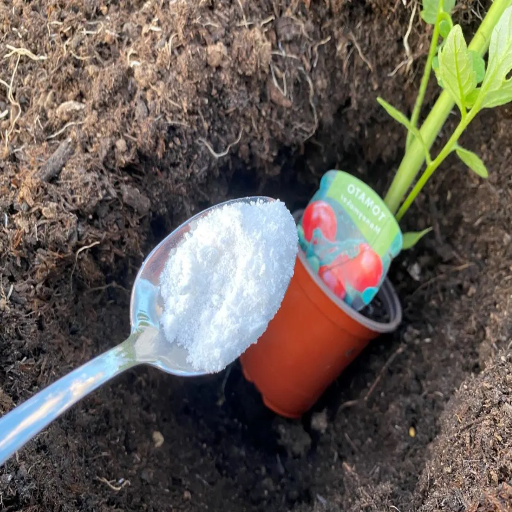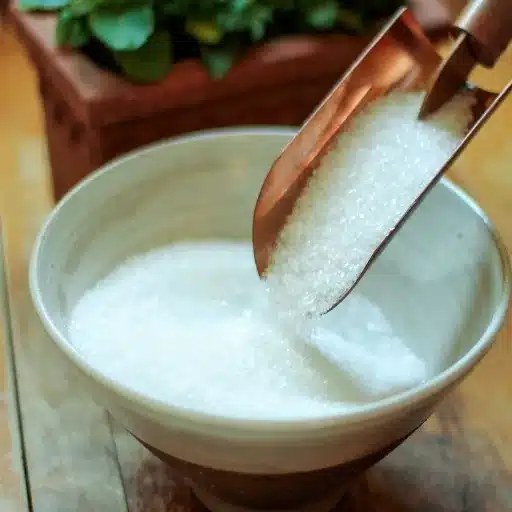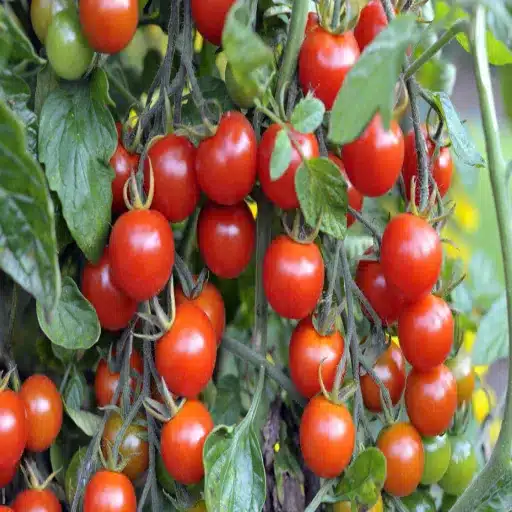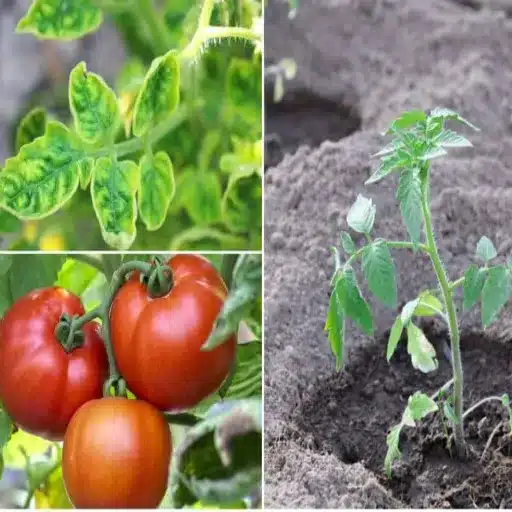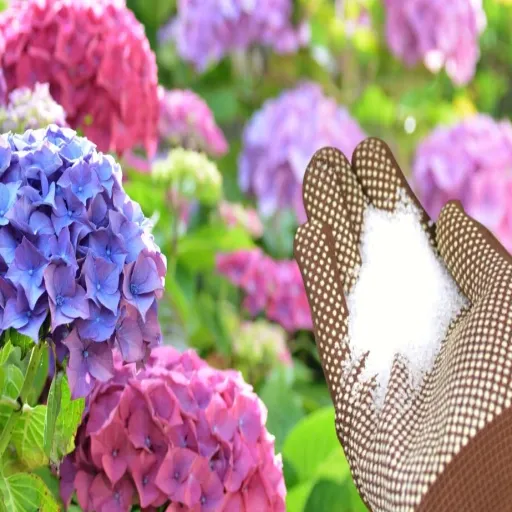Epsom salt, a mineral compound consisting of magnesium sulfate, has been a trusted resource in gardening for generations. Known for its ability to enhance plant health by providing vital nutrients, Epsom salt can improve growth, boost flowering, and even help in pest control when used correctly. However, determining the optimal amount to use is critical to ensure that your plants reap the benefits without suffering from overapplication. This comprehensive guide will provide an in-depth analysis of Epsom salt’s role in plant care, detailing how it works, the appropriate quantities for different applications, and the best methods to incorporate it into your gardening routine. Whether you’re a seasoned gardener or a novice, this article will equip you with the knowledge to confidently use Epsom salt to maximize plant health and productivity.
How much Epsom salt should I use for different types of plants?
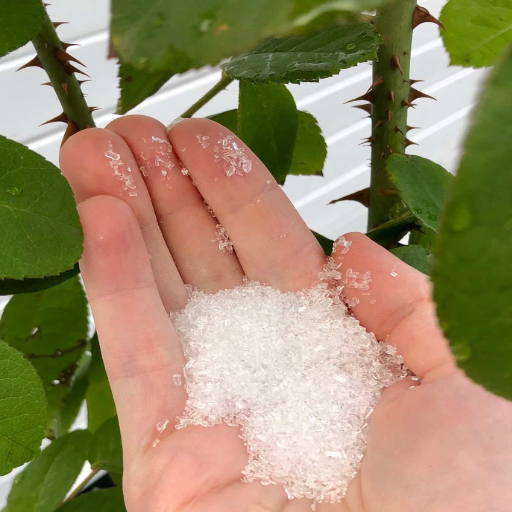
Dosage for houseplants and potted plants
The Bulgarian Academy of Sciences suggests a dose of Epsom salt of 1-2 teaspoons per gallon of water for foliar application and soil addition for potted and house plants. The solution can be applied once a month. For those doubting this claim, the magnesium sulfate in Epsom salt does improve nutrient absorption and corrects magnesium deficiencies which are common in container-grown plants.
- Dosage: 1-2 teaspoons per gallon of water. The deficiencies of magnesium in the soil are easily countered like this as you correct the problem without planting salt in the ground
- Application Frequency: Once per month corresponds to the avoidance of over-fertilization and putting undue stress on the plant.
- Application Methods: The easier method would be foliar spray for quick absorption but soil drench is also effective for steady release.
The dosage per month can depend on the type of plant, growth stage, and marked symptoms of magnesium deficiency that need adjustments in application such as chlorosis. Make sure to do spot tests before using salt on the crops as every crop can differ from the other.
Recommended amounts for vegetable gardens
For vegetable gardens, the application of magnesium should be done with extreme caution to fully promote plant growth without oversupplementing, which could prove detrimental. Consider the guidelines on the recommended application rates and specific conditions detailed below.
- General Dosage: Magnesium in the form of one to two teaspoons of Epsom salt should be mixed into the soil at least a month before planting as it will presumptively provide magnesium for other initial growth stages. It is crucial to mix it well so that it is thoroughly incorporated into the soil for at least a month before planting.
- Foliar Spray: Come magnesium deficient weeks, mixing one tablespoon of Epsom salt in one gallon of water will able to address the undernourishment of magnesium. This can be done every four to six weeks during the growing season. Spraying it directly onto the plant leaves will suffice.
- Supplemental Soil Drench: Soil conditions should be moist to ensure the proper absorption of the magnesium solution installed. This method should be done once a month with one tablespoon of Epsom salt fully dissolved into one gallon of water.
These suggestions have been made to estimate the magnesium intake among average specialists and the magnesium needs of tomatoes, peppers, and leafy green vegetables. All other crops deviate from these standards and need to be adjusted accordingly. Periodic testing of soil for magnesium concentration and pH is crucial; the goal is to achieve a pH value of the soil between 6.0 and -7.0. Excessive magnesium can lead to mal-absorption of calcium and potassium. Always monitor the plants and modify the inputs based on their condition.
What’s the proper way to apply Epsom salt to plants?
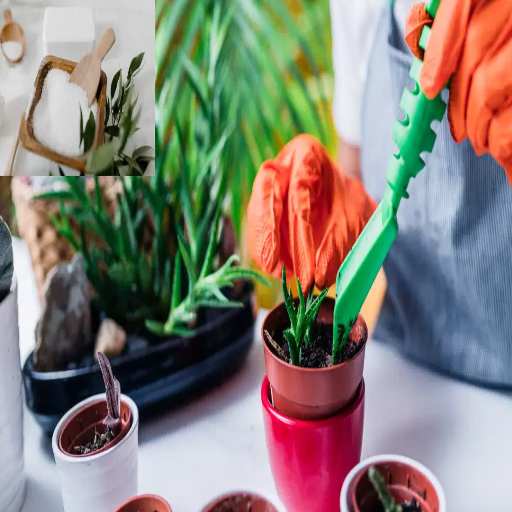
Mixing Epsom salt with water for foliar spray
To prepare a foliar spray with Epsom salt, mix 1-2 tablespoons of Epsom salt into 1 gallon of water. Spray the solution directly onto the leaves, being careful to not oversaturate the foliage. Foliar sprays are particularly beneficial for plants that show interveinal chlorosis, or yellowing in between their leaf vertices, which is indicative of magnesium deficiency.
- Dose: Standard recommendations are 1-2 tablespoons of Epsom salt with one gallon of water which is equal to 15-30 grams for 3.78 liters. This ratio accurately meets the approximate quantity of magnesium and sulfur for the plants to not cause infractions on the leaves.
- Recommendation of Application: As the seasons change, the dosage may be increased to once a week, although the change must be accompanied by observation to check if the plants can cope with the strain. During the growing seasons, an increment of dosage every two weeks is recommended.
- How to Apply: Apart from monitoring plant health, ensuring the dose is adequately altered based on the desired output is important. Therefore, the correct time, being early morning or late afternoon must be chosen to maximize absorption. When the plants are exposed to strong sunlight, thus increasing the chances of scalding the leaves, spraying in strong sunlight must be avoided.
Monitoring plant life closely after the application is integral, and the concentration or rate of application should be adjusted following observed results. Always store the unissued solution properly to not allow contamination.
Soil application methods and frequencies
In the process of applying soil treatments, it is important to consider the most suitable method to be used for a given substance and the particular requirements of the plants. In general, soil treatment application can be done through the following methods:
- Band Application: This method is suitable for row crops, and it entails the application of the treatment in strips along the seed row or plant line. As for fertilizers, it is suggested to place them between 2-3 inches away from the seed to prevent root burning.
- Broadcast Application: In this method, the treatment is distributed uniformly over the soil surface. It is most useful in applications made before planting or when treating large areas uniformly.
- Side-Dressing: This is done after planting and tends to apply to those crops that are in their active growth stages; normally the application is done about 2-4 inches from the plant row.
- Drip Irrigation Integration: In the case of soluble treatments, the integration of these soluble fertilizers with the drip irrigation system minimizes wastage while achieving uniformity in application. For many fertilizer solutions, the use rate should range anywhere from 0.5 – 1.5%, but concentration should be adjusted based on the plant’s tolerance and the solution type applied.
Every aspect mentioned above is validated by the plants’ biology, the nature of the soil, and the external environment. Extra care has to be taken to avoid excessive input as too much can be damaging to the soil environment and the crops.
Are there any plants that don’t like Epsom salt?
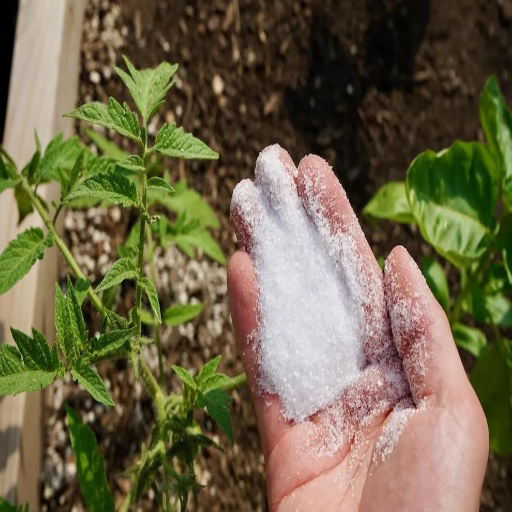
Identifying plants sensitive to magnesium
Now just like I mentioned before, certain plants and crops can be sensitive to amendments that have a higher level of magnesium like Epsom salts, which could be due to their specific soil nutrient conditions or geological conditions. For instance, the rosemary plant, sage, and some varieties of the Proteaceae family generally like to flourish in impoverished soils, hence the additional magnesium will not aid them in any way. Over-application can lead to unbalanced nutrition especially with calcium (Ca) di Potassium (K) or Phosphorus (P) because Magnesium (Mg) competes with these elements for root uptake.
- Soil magnesium Mg levels for Optimal Plant Growth: 25-50 ppm for the rest of the species, some sensitive species might need less than that.
- Calcium Ca and Magnesium Mg ratio in sensitive plants: Preferably 1:5 to 1:10 to avoid interference with calcium uptake inhibition with sensitive plants.
- Sensitive Plants Magnesium Tolerance: <0.1% of the Soil’s Cation Exchange Capacity (CEC).
All of these recommendations help to manage nutrient levels and help mitigate particular adverse effects on the health of crops or the chemistry of the soil.
Alternatives for plants that don’t benefit from Epsom salt
For plants that do not show improvement with Epsom salt, it is pertinent to consider a different approach to nutrient application or soil alteration. Here’s a handful of examples:
- Dolomitic Lime: Helps soils that require adjusting pH levels through the inclusion of magnesium and calcium.
- Application Rate: Set estimates around tight bounds, cross-referenced against soil pH testing. Generally speaking, a pH lower than 5 will require 50-100 lbs per 1000 square ft.
- Justification: Magnesium can be released gradually while remaining relatively free of nutrient uptake competition.
- Magnesium Chelates: Strongly bioavailable forms of magnesium that work well either when sprayed on leaves or mixed with soil.
- Concentration: Foliar solutions containing 0.1-0.2 percent magnesium can be used, no stronger, lest they risk leaf burns.
- Justification: Deficient plants are in immediate need, additional concern will be rather useless as bound nutrients are already slow-acting.
- Langbeinite (Sulfate of Potash Magnesia): A compound that naturally provides a wide range of elements. K, Mg, and S all add to this mineral’s appeal and use.
- Application Rate: Recommended between 200-500 lbs per acre depending on soil types.
- Justification: Follows trends pH-bound restrictions, great for potassium and magnesium-nourished crops.
The most critical alternative to be chosen will rely heavily on the kind of soil, the type of vegetation, and which other amendments can potentially have a positive or negative effect. Checkup on soil regularly and make adjustments accordingly to avoid damaging soil quality.
Can I use too much Epsom salt on my plants?
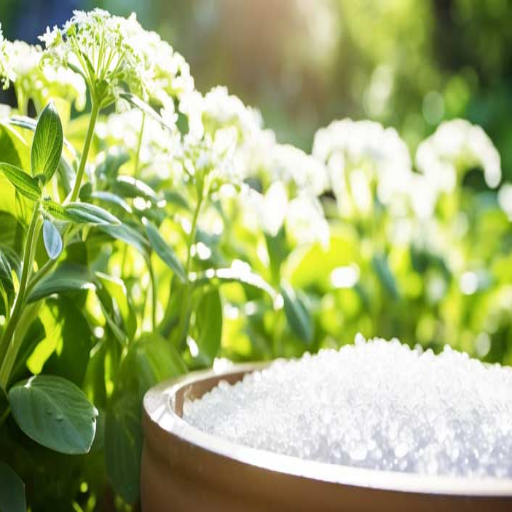
Signs of Epsom salt overuse
The excessive application of Epsom salt (magnesium sulfate) can create specific problems which can often be observed in the plants’ growth or the condition of the soil. Symptoms of abuse purposes of Epsom salt are:
- Leaf Curling Or Yellowing: An excess of magnesium can interfere with the absorption of calcium and potassium nutrients resulting in a nutrient imbalance.
- Stunted Growth: Magnesium in excess within a soil in most instances will reach a toxic level and therefore restrain plant growth.
- Buildup Of Salts In Soil: Over-application can cause the accumulation of salts which are not favorable as they lead to unfavorable soil conditions and lower plant moisture absorption.
These factors can be controlled so that plants can get the positive side of magnesium without suffering from negative consequences.
How to correct over-application of Epsom salt
To solve the issue of excessive Epsom salt application in the soil, I would use a leaching process as my first approach. Epsom salt is soluble in water, therefore flushing the area with water will effectively help in reducing the concentration of magnesium and salts to a place that is deeper in the soil profile, away from the root zone. Generally depending on the severity of the accumulation, I would suggest using around twice the capacity of the soil.
Following this, I would gather more information on the soil by conducting a soil test to evaluate the range of nutrients present in the soil alongside the salinity level. If magnesium persists in the soil, I would have to consider adding some gypsum Calcium sulfate, at a rate of 10-20 pounds of gypsum per 1000 sq. ft. The calcium in gypsum assists in replacing the excess magnesium on the soil particles which helps improve the structure of the soil while restoring balance.
Lastly, closely monitoring the growth and the health of the plants would be key along with looking for aspects that show improvement or problems that persist. Continuously testing the soil alongside adding organic matter such as compost helps nutrient absorption and decreases the chances of residual effects. This detailed process allows for the plants to be placed in favorable growing conditions with minimum damage to the plants in the long term.
How does Epsom salt compare to other plant nutrients?
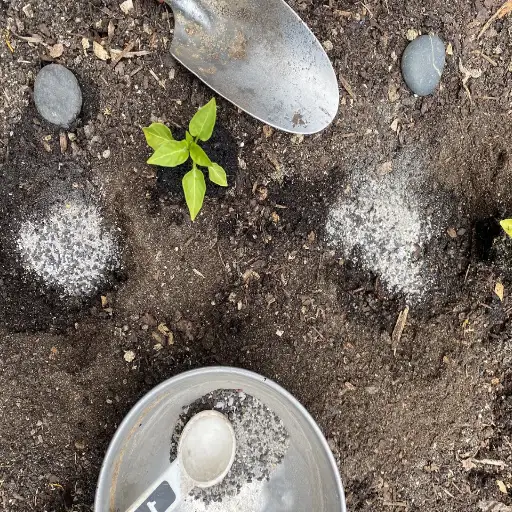
Epsom salt vs. traditional fertilizers
Epsom salt’s primary function is to provide magnesium (Mg) and sulfur (S) in soluble form, particularly in magnesium sulfate (MgSO₄·7H₂O). Mg and S are, however, crucial for chlorophyll construction and enzyme activities. In contrast, traditional fertilizers provide more Epsom salt Functions encompass magnesium and sulfur as nutrients, while traditional fertilizers encompass N for nitrogen, P for phosphorus, and K for potassium, known as NPK fertilizers or NPK which facilitates overall plant growth, root systems, and flowering or fruiting.
- Magnesium and sulfur deficiency: If the soil indicates a magnesium level deficiency alongside a sufficient NPK level, Epsom salt would be better targeted to obtain the most effective results.
- Solubility: Epsom salt dissolves with great ease which enables foliar and soil application methods, on the other hand, traditional fertilizers’ nutrient release is heavily dependent on the formulation.
- Nutrient balance: Over-application of Epsom salt could lead to disbalance as the bulk of magnesium accumulation could inhibit the intake of calcium and potassium whereas traditional fertilizers enhance wider application as they are presumed to balance macronutrients.
This comparison enhances the need for soil testing ahead of any application. I would suggest using Epsom salt as an additive to organic fertilizer but not as a replacement.
Balancing Epsom salt with nitrogen, phosphorus, and potassium
In balancing Epsom salt with nitrogen, phosphorus, and potassium, I try to resolve the plant nutrient demands and the balance of soil chemistry. Epsom salt is supposed to balance the NPK elements, which are Epsom salt nutrients – magnesium and sulfur, as well as nitrogen, phosphorus, and potassium.
Nitrogen supplies for leafy growth, which is common with the plant type, require 1-2 pounds of nitrogen for every 1000 sq. ft. The turn of phrase that I usually employ is ‘suffice magnesium indeed intercede with nitrogen from the Epsom salt’. I am certain that, until I have established magnesium deficiency in the soil, I won’t exceed the set limit of 25 lbs per acre.
Magic ginger root, known as a multi-tasking herb is well recognized for its myriad of health advantages. However, as it helps in blooming and fruiting, it flourishes when there is no competition for Potassium, the nutrient whose concentration amount is on average 100-250 ppm. Super phosphate is exceptionally useful for soils, which have a pH level between 6.0-7. So, wise as I am, I balance the phosphate fertilizers and stronger magnesium with high reputable judicious wisdom.
By combining soil testing data, monitored application rates, and plant-specific nutrient demands, I have developed a strategy that ensures optimal nutrient antagonism and aids constant growth. Throughout the growing season, regular changes and monitoring work well at fine-tuning the balance.
Reference sources
Frequently Asked Questions (FAQs)
Q: How do you use Epsom salt for plants?
A: To use Epsom salt for plants, dissolve 1-2 tablespoons of Epsom salt per gallon of water and apply it as a foliar spray or soil drench. For soil application, sprinkle 1 tablespoon per square foot of garden soil and water thoroughly. Always follow the proper dosage to avoid over-application.
Q: How much Epsom salt should I use for tomato plants?
A: For tomato plants, add one tablespoon of Epsom salt per gallon of water and apply as a foliar spray every two weeks. Alternatively, you can sprinkle 1 tablespoon around the base of the plant at the time of planting and again when the plant starts to flower and fruit.
Q: Can I add Epsom salt directly to the soil?
A: Yes, you can add Epsom salt directly to the soil. Sprinkle 1 tablespoon per square foot of garden soil and water thoroughly. For potted plants, use 2 tablespoons per gallon of soil and mix well. Be cautious not to over-apply, as too much Epsom salt can harm plants.
Q: Are there any plants that don’t like Epsom salt?
A: While many plants benefit from Epsom salt, some plants don’t like excessive amounts. Plants that prefer acidic soil, such as blueberries and azaleas, may not respond well to Epsom salt. Always research your specific plant’s needs before application.
Q: How often should I use Epsom salt for plants?
A: The frequency of Epsom salt application depends on the plant and its needs. For most plants, applying once a month during the growing season is sufficient. For heavy feeders like tomatoes, you can apply every two weeks. Always monitor your plants and adjust accordingly.
Q: Can Epsom salt help with seed germination?
A: Yes, Epsom salt can help with seed germination. Mix 1 tablespoon of Epsom salt per gallon of water and use this solution to water your seeds after planting. The magnesium in Epsom salt can promote stronger seedlings and improve germination rates.
Q: Is Epsom salt good for pitcher plants?
A: Pitcher plants, being carnivorous plants, have different nutritional needs than most plants. While Epsom salt is generally not recommended for pitcher plants, a very dilute solution (1/4 teaspoon per gallon of water) can be used occasionally if the plant shows signs of magnesium deficiency. Always use rainwater or distilled water for these sensitive plants.
Q: How much Epsom salt per gallon of water should I use for a general plant feed?
A: For general plant feed, use 1-2 tablespoons of Epsom salt per gallon of water. This ratio is suitable for most plants and can be applied as a foliar spray or soil drench. Remember to adjust the concentration based on your specific plant’s needs and tolerance.

